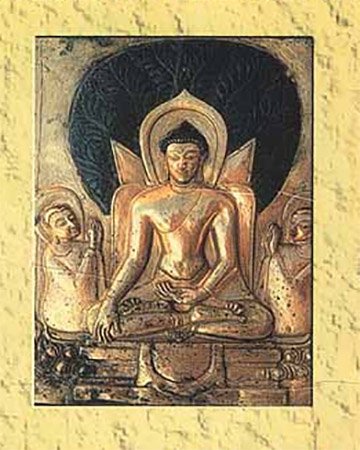The Mahavastu (great story)
by J. J. Jones | 1949 | 502,133 words | ISBN-10: 086013041X
This page describes hell named samghata which is Chapter II-d of the English translation of the Mahavastu (“great story”), dating to the 2nd-century BC. This work belongs to the Mahasanghika school of early Buddhism and contains narrative stories of the Buddha’s former lives, such as Apadanas, Jatakas and more..
Chapter II-d - The hell named Saṃghāta
This hell is situated between two mountains, is made of fiery, flaming and blazing iron, and is several hundred yojanas in extent. The armed warders of this hell show the way to the doomed, who in terror enter in between the mountains. In front of them fire appears, and in their terror they turn back. But behind them, too, fire appears, and the mountains converge to meet each other, and as they do so the doomed shout, “Look at the mountains coming on us! See them come!” The mountains meet and crush them as so much sugar-cane.
Again, the mountains rise up into the air, and the doomed pass beneath them. When many thousands have done so, the mountains subside so that they are crushed as sugarcane is crushed, and their blood flows in streams. They are left heaps of bone refuse, without flesh, but held together by their sinews. In this state they suffer agonies, but they do not die as long as their evil karma is not worked out to the end.
As a maturing of what karma are beings reborn there? Those who in this world cause worms to be crushed, or the earth to be dug up, or, just as happens to beings[1] in the sword-leafed forest, who flog living creatures with clubs having the leaves still on them, or who crush with their finger-nails nits, lice, and sāṅkuśas,[2] are reborn there as a maturing of this karma.
This, again, is only a principal cause of rebirth there.(22) Those reborn there reap the fruit of still other sinful and wicked deeds. They are kept a heap of bones for five hundred years in iron pots that burn, blaze and flame, and under a veritable shower[3] of burning, blazing and flaming iron pestles. In this state they undergo intense sufferings.
As a maturing of what karma are beings reborn there? Those who in this world stab living creatures with daggers, or fell them with bludgeons, and those who destroy living creatures by grinding them in mortars with red-hot pestles, are reborn there as a maturing of this karma.
Why is this hell called Saṃghāta? People in this hell endure being herded together.[4] That is why this hell is called Saṃghāta.
Footnotes and references:
[1]:
Devānām should obviously be changed to sattvānām (? sattvāni) for it is impossible to imagine the devas possessing, or dwelling in, a sword-leafed forest.
[2]:
An unknown insect, literally, if, that is, the reading is correct, “having a goad or sting.”
[3]:
Literally” as in a shower of iron,” ayopāte yathā.
[4]:
I.e. from sam-han, “to beat together,” etc.
